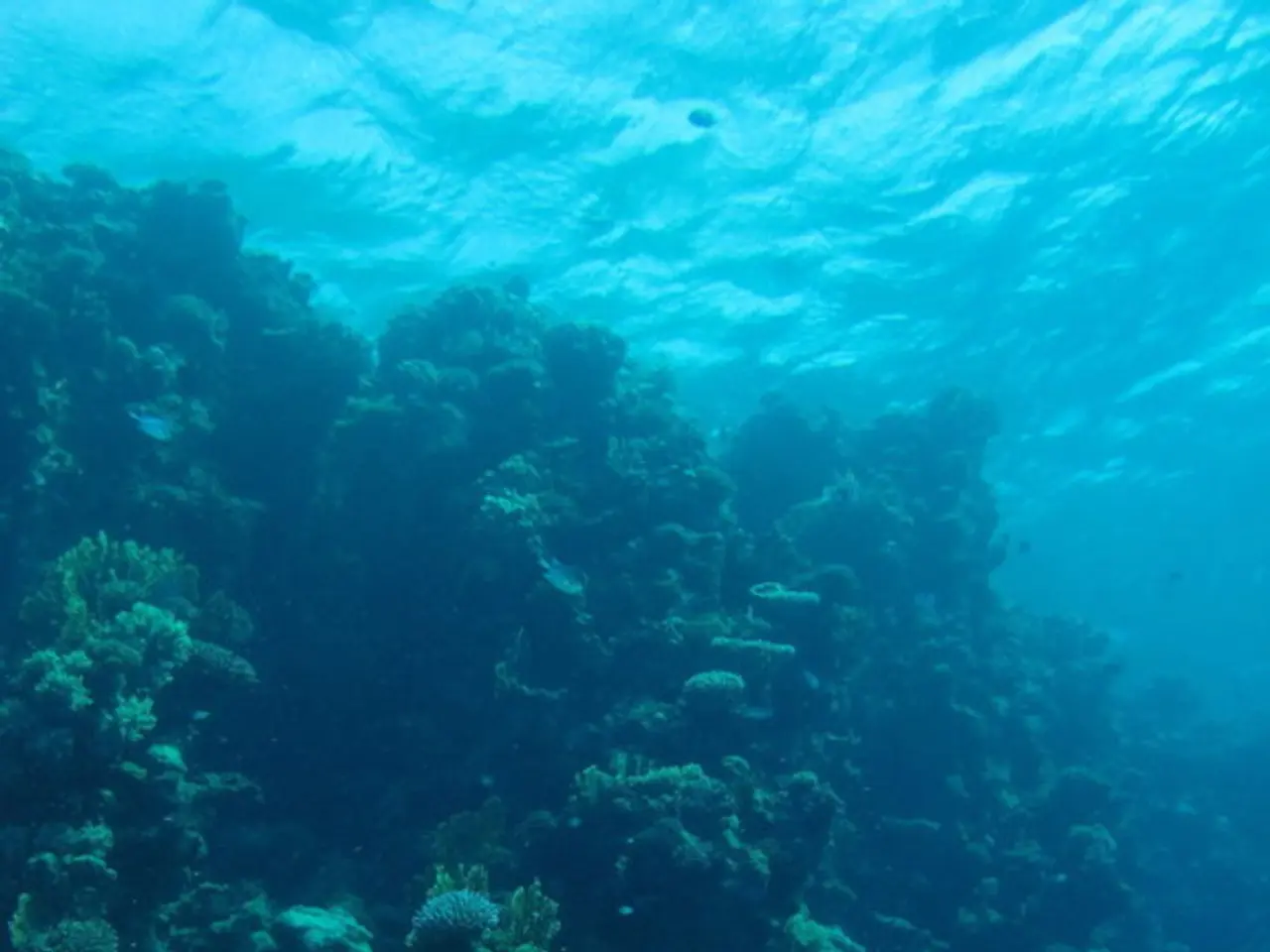Researchers at Scripps obtains approximately $5 million to investigate causes of harmful, poisonous algal blooms leading to fatalities
Scientists from the University of California San Diego (UCSD) are leading a groundbreaking study to understand the factors that cause oceanic algal blooms to turn deadly. The research, funded by a $4.9 million grant from the National Oceanic and Atmospheric Administration (NOAA), aims to improve predictions of bloom toxicity, leading to earlier and more accurate warnings and improved mitigation strategies.
The study is part of NOAA's Ecology and Oceanography of Harmful Algal Blooms (ECOHAB), a nationally competitive research funding program. Scripps Oceanography, a world-renowned centre for global earth science research and education, is leading the study. The institution operates a fleet of four oceanographic research vessels and is home to Birch Aquarium at Scripps.
The geographic scope of the project stretches along the coastal waters from Monterey Bay to Santa Barbara to Del Mar. The team will investigate chemical interactions during algal blooms that turn toxic or hypoxic, monitor bloom development and its impacts on marine species, and develop forecasting tools or mitigation strategies to reduce the threat to ecosystems and human health.
The study will focus on the diatom Pseudo-nitzschia, which produces the harmful toxin domoic acid. This toxin can cause memory loss, seizures, and even death in larger mammals, including humans. The team will sequence the genome of Pseudo-nitzschia strains to better understand the diversity and distribution of domoic acid-related genes.
Underwater robots, led by biological oceanographer Clarissa Anderson, will help detect and follow subsurface blooms, better understanding the conditions of the deeper ocean when they occur. Anderson's team will sample deeper water and detect subtle changes in gene expression that could lead to a better understanding of what causes harmful algal blooms.
Meanwhile, Bradley Moore and his team will conduct laboratory experiments aimed at understanding cellular and physiological triggers for domoic acid production. The study will deploy a suite of underwater technologies, including semi-permanent instruments called Wirewalkers, to predict when algal blooms will turn toxic.
The project continues NOAA's efforts to develop ecological forecasts for harmful algal blooms, as demonstrated by Maggie Broadwater from the NOAA ECOHAB Research Program. The study's findings have implications beyond California, potentially leading to improved predictions and mitigation strategies for harmful algal blooms worldwide.
This research comes at a crucial time, following the 2015 toxic algae bloom that caused massive marine die-offs from central California to the Alaskan peninsula, impacting various fishing industries. By understanding the underlying cellular and oceanographic factors that cause genes of this diatom to produce the toxin, scientists hope to pinpoint and predict the cellular toxic triggers, ultimately leading to improved predictions and mitigation strategies for deadly oceanic algal blooms.
References:
- NOAA. (n.d.). Harmful Algal Blooms. Retrieved April 18, 2023, from https://www.noaa.gov/education/resource-collections/harmful-algal-blooms
- Scripps Institution of Oceanography. (n.d.). Research Areas: Harmful Algal Blooms. Retrieved April 18, 2023, from https://scripps.ucsd.edu/research/areas/harmful-algal-blooms
- National Geographic. (2016, August 16). How Algae Blooms Can Kill. Retrieved April 18, 2023, from https://www.nationalgeographic.com/news/2016/08/160816-dead-zones-ocean-pollution-climate-change-toxic-algae-blooms/
- EPA. (n.d.). Harmful Algal Blooms. Retrieved April 18, 2023, from https://www.epa.gov/nutrient-policy-data/harmful-algal-blooms
- UC San Diego News Center. (n.d.). UC San Diego Researchers Receive $4.9 Million Grant to Study Oceanic Algal Blooms. Retrieved April 18, 2023, from https://ucsdnews.ucsd.edu/pressrelease/uc-san-diego-researchers-receive-49-million-grant-to-study-oceanic-algal-blooms





